Our day began slowly but surely, in a familiar setting, as we assisted to lectures given by Drs. Lougheed and Wang in the morning. Defeating the heat and multiple technical difficulties (looking at you, projector!), we had the opportunity to review our amphibians and fish knowledge, with focus on their phylogeny, the big groups they’re composed of, shared physiological and morphological characteristics, and even the diversity of their reproduction modes. For example, did you know that gastro-brooding frogs (Rheobatrachus) ingest their eggs after laying them, let them hatch inside their stomach, then give birth through their mouth? How cool is that! We came out of the lecture hall with plenty of new conversation starters and impatient to observe some of those traits in the field a bit later this week, with new herpetologist and ichthyologist eyes!
After a typical Chinese lunch at the JSB canteen, we headed towards Shanghai QingXi Country Park in Qingpu, where the government is making massive wetland and aquaculture restoration efforts. As the Chinese population is reaching extraordinary numbers, the goal of these efforts isn’t so much to bring back the ecosystem to what is was before industrial aquaculture and agriculture, but rather to reconciliate nature with these human activities. The park, with an opening area of 4.6 km2 out of a total planning area of 22.35km^2 and centered on the Da Lian Lake, is the only country park featuring wetland in Shang Hai. We observed rice and fragrant wheat fields, fishponds, lotus fields and even peach trees at there. The quiet beauty of a submerged Cyprus forest almost made us feel like we were on a different planet entirely. Despite the fact that it is an artificial ecosystem, it provides a comfortable living environment for many living organisms and plants. For instance, tiger grogs (Rana rugulosa Wiegmann) have been introduced in the rice fields to protect the crops from being consumed by voracious insects. Since the frogs don’t survive the winter, their numbers are easily controlled. The park also provides precious sanctuary to over a hundred species of birds, where keeps them away from pollution and destruction of habitats. We caught a glimpse of a few of these birds, such as egrets (Casmerodius albus) and grebes (Tachybapus ruficollis). Lu even found a species that shares her name in Chinese. That’s all for today and we are very excited for the following activities in Wuhan.
新的一天随着王教授和罗汉德教授的授课缓慢但无疑地开始了。我们克服了技术故障与高温,重新回顾了关于两栖动物和鱼类生态发育,结构组成,生理和形态特征以及它们生殖模式多样性的知识。例如:食道蛙会吞食产出的卵子,在胃中孵化它们,孵化成功的幼蛙将会从母蛙的嘴里穿出。这多么不可思议呀!我们于11:30左右离开教室后迫不及待的开始期待在在接下来的几天去用食草动物学家以及鱼类学家的眼睛去观察自然动物的特征。
在嘉兴环境研究院的餐厅吃过午饭后,我们去往政府大力建设水产业与湿地修复的上海青浦青西郊野公园。由于中国人口的快速增长,政府投资建设青西国家公园的目标不是将生态系统恢复到工业与水产业出现之前的状态,而是将人类活动与自然相协调化。以大莲湖为中心的青西郊野公园是上海市唯一 一个以湿地为特色的郊野公园,其总规划面积为22.35平方公里,目前开放面积为4.6平方公里。我们在那里看到了水稻, 麦田,鱼塘,莲花田以及桃树。尽管它是一个人工生态系统,但它为许多生物和植物提供了一个舒适的生活环境。例如在水稻田中引入虎纹蛙,利用虎纹蛙在消灭破坏庄稼的昆虫。由于虎纹蛙在冬天无法生存,所以他们的数量很容易控制。青西郊野公园里面生存了超过100种鸟类,其中白鹭最普遍。我们的白露同学还与白鹭合照了。青西郊野公园的宁静之美为我们今天的行程画上了一个完美的句号。让我们一起来期待接下来几天的武汉之旅!
- Black-crowned night-heron, one of many heron/egret species at Dianshan Lake
- Black-crowned night-heron juveniles
- Little grebe dancing on the water
- Yuxiang expounding on the boardwalk at Dianshan Lake
- Planted cyprus creating a lovely reconstructed swamp
- Figure 8. Dr. Lougheed giving a lecture on amphibian. 王教授传授两栖动物知识
- Figure 7. Dr.Wang giving a lecture on fish. 王教授传授鱼类知识
- Figure 6. Cedar trees and Chrysanthemum 林间小路之杉树与菊花
- Figure 5. Lu Bai and Little Egret (Egretta garzetta) 白露与白鹭
- Figure 4. Q&A time with Dr. Wang. 与王教授的答疑时间
- Figure 3. Fish pond in Qing xi Country Park. 青西郊野公园的鱼塘
- Figure 2. Dawn redwood水杉树 (Metasequoia glyptostroboides)
- Figure 1. Layout of Shanghai Qing xi Country Park. 上海青西郊野公园布局图
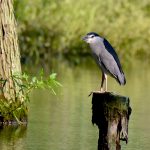

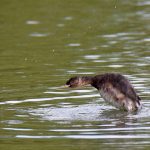

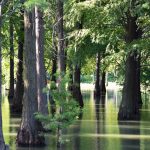
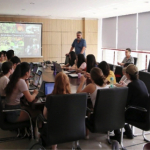
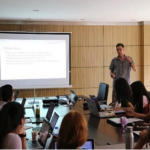
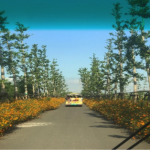
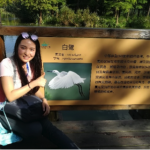

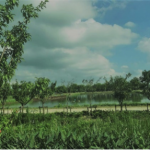
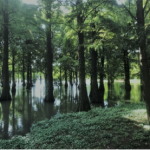
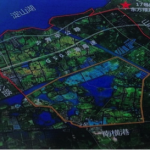
Leave a Reply